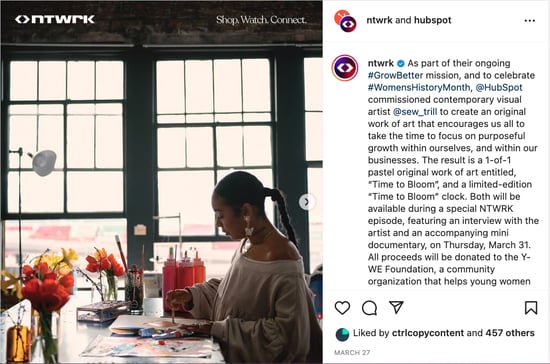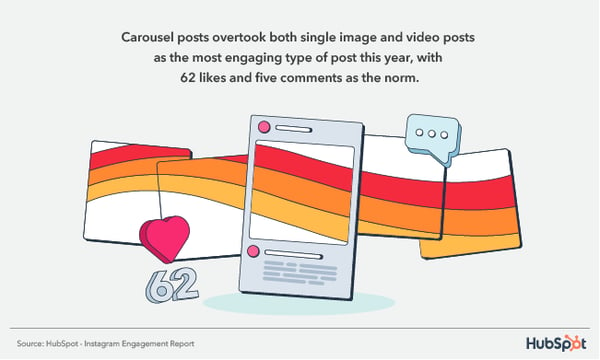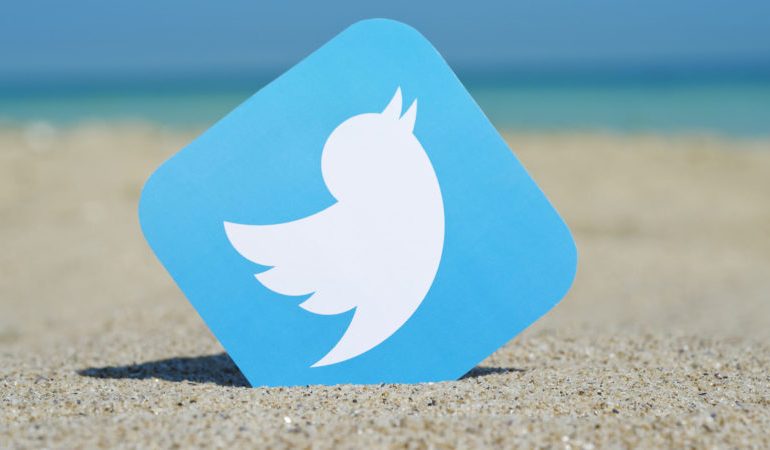Instagram seems to be made for branding in many ways. It is available to almost any business, rewards artistic imagery, promotes engagement, and fits a wide range of niches. With over a billion unique users, Instagram is most importantly a platform that people want to use, giving your branding initiatives an initial captive audience.
However, Instagram’s user base’s openness to businesses is what really makes it stand out for branding. Instagram users will be more than glad to follow you and patronize your brand as long as your material is effective. Take a peek at this in-house Instagram data:
- 90% of Instagram users follow a business account
- 2 out of 3 users agree that Instagram helps them talk to brands
- 50% of users become more interested in a brand if they see it in an Instagram ad
If you’re new to branding on Instagram, though, things may not seem so smooth at first. There’s a bit of a learning curve and the best choices aren’t always obvious. So to help you get your name out there, here’s our Instagram branding guide with advanced tips on how to use Instagram for branding.
1. Build an Instagram strategy.
We listed this as the first step because it is the most crucial step in building a brand on Instagram. If you lack a clear strategy, you’ll end up with low-performing content and a scattered feed as you struggle to brainstorm new ideas.
To build your Instagram strategy, you’ll need to do four things:
- Determine your goals.
- Narrow down your target audience.
- Research your competition.
- Develop your content plan.
2. Experiment with the platform’s features.
Instagram is constantly evolving. In fact, every week, the Head of Instagram shares a video discussing new features and product updates on the platform. In one of his latest videos, he announced that they were testing a subscription feature that would allow people to subscribe to their favorite creators and get access to exclusive Lives and Stories.
In addition to all the new features the social platform tests, there are a lot of established tools, such as Live Rooms, shoppable posts, scheduled Lives, and hashtags – just to name a few. Our advice is to choose one to two features to test out every month. This will prevent you from getting overwhelmed and allow you to measure the impact of each feature. For instance, hashtags can help you reach users who don’t follow you but could be interested in your products and services.
Another reason to test Instagram features is that it can help you reach more users. The platform has admitted to prioritizing accounts that use features the brand wants to highlight, such as Reels.
It’s a win all around: You stay ahead of the curve, discover which features work for you, and you can expand your reach in the process.
3. Jump on trends.
On social media, all it takes is one person’s video or sound to go viral for the rest of the world to join in with their own version. Most of these trends are fun and harmless with a lifespan of about three weeks or less.
Why should you join in? Well, it’s an opportunity to connect with your audience in a creative and fun way. If you jump in as the trend is rising, it can also give you a quick boost in engagement and reach.
When considering joining any trend, there are two things you want to ask:
- How can I bring this back to my business and/or industry to make it relatable to my audience?
- What is the origin of this trend and could it go against our company values?
4. Invest in high-quality creative assets.
A great Instagram post can be boiled down to a formula and requires two elements: beautiful imagery and engaging text.
- Beautiful Imagery
Choose images that tell a story or elicit emotion. This image we shared is not only compelling and interesting, but it also elicits emotion and therefore drives engagement from our followers.
Read Also: Ultimate Guide to Digital Branding
What this will look like for your business will depend on your industry, but think outside of posting images of your own products and services. Posting about yourself repeatedly on social media is like being that person at a party who talks constantly about themselves. Also, beware of copyright issues.
If the image is not your own, request permission to use it or source non-attribution-required photos.
- Engaging Copy
While you don’t have to add text to your Instagram posts, doing so packs a punch that just an image won’t provide. Think of your caption as an additional way to reel in your followers and keep them engaged. It’s a place to add context, share more information, ask a question, and invite comments.
5. Leverage strategic partnerships.
One of the biggest frustrations for most marketers delving into Instagram is that they don’t know how to build a following. After all, without a large number of followers, how can it possibly be an effective marketing channel?
There’s one tactic in particular that we used to quickly grow our Instagram following to 10,000 in just a couple of weeks: partnering with other Instagram accounts.
Are we talking about co-marketing or influencer marketing? Both because they lead to the same result: Expanding your reach.
In addition, both require you to:
- Conduct research to see if their audience aligns with yours.
- Review your business goals and determine the KPIs for the partnership.
- Collaborate on a content strategy.
For example. HubSpot recently teamed up with @ntwrk to celebrate Women’s History Month and promote the Grow Better mission.

Now that Instagram allows the same post to be shared by two profiles, brands can co-market easily on the platform. Followers from both accounts will view the post, increasing each one’s reach and engagement.
6. Foster a community of highly engaged followers.
Engagement on Instagram comes in many forms, including followers sharing your content, liking and commenting, tagging their friends, and clicking on your calls to action. In this section, we’ll go over some of our tactics for fostering a community.
- Post When Your Followers Will Actually See Your Content
Have you ever posted something to social media that you think will do really well, only to be met with crickets? Low likes, low shares, and the only comments you landed were from spambots.
While it’s easy to assume you miscalculated the potential of the post, it could just be that you posted the update at the wrong time.
The easiest way to know when your followers will be active on the app is to head over to your insights dashboard. If you have a business account (you should), you can learn valuable insights about your audience’s demographics and behavior on the app, including location, age, gender, and activity.
From there, you can schedule your posts based on your audience’s most active days and times.
- Invite the Engagement
A lot of brands will start Instagram accounts and become frustrated when people aren’t engaging with their content.
It seems so obvious and simple, but sometimes actually asking for your audience to engage makes all the difference. You can either include the action you want your followers to take as part of the image itself, or include it in the caption.
7. Post regularly.
When a user is scrolling on the app, you are competing for their attention along with millions of other brands. Because of this, visibility is key. With so many ways to share content, from Reels to Stories to Lives, there are a lot of opportunities to reach your audience – each demanding a different level of effort and preparation.
This is good news for brands, especially small ones. While it’s recommended that you share on the platform every day, you can choose how you share based on your bandwidth and which methods offer the best ROI.
For instance, an in-feed post likely requires more work than a Story since it will live on your profile. With a Story, you can quickly engage your audience through a quick poll, a question, a reshared post knowing that it will disappear after 24 hours.
A good rule of thumb: Publish an in-feed post three to four times a week and share on Stories every day.
8. Review your data and optimize your approach.
If you’re already following all the tips we’ve outlined above and you’re still struggling to get meaningful traction on the app, the answer could be in your data. Too often, brands get stuck in one approach and don’t review their data to see if it’s actually working.
Your Instagram Insights dashboard offers a wealth of information on how each post performed, including impressions, accounts reached, content interactions, and profile activity.

For instance, say you’ve been posting images for the past month, then you post one video and it outperforms 60% of your previous posts. That’s an indication that your audience may respond better to video content. It’s worth experimenting with more videos.
If you don’t analyze your performance and look for optimization opportunities, there’s a good chance you’ll reach a plateau with no idea how to get out of it.
9. Share your Instagram profile on other channels.
As you work to grow your following on Instagram, you can also drive traffic to your profile externally. One way to entice users to follow your page on that platform is by hosting a giveaway or sharing exclusive content.
In addition, don’t be afraid to promote your Instagram on other social platforms. For instance, your website could include a section with your Instagram feed along with a call-to-action to follow your page. You can also include a link to your Instagram profile in your email marketing campaigns.
Wherever you have an online presence, be sure to share the link to your profile so that your audience knows where to find you.
10. Convert your followers into subscribers.
As you know, email marketing is crucial to a thriving business. Instagram has been an important driver of email subscribers for Foundr, converting around 15,000–30,000 followers into subscribers each month, depending on our promotions.
If you’re familiar with Instagram’s limitations, you may be wondering how this is possible. After all, Instagram doesn’t allow links in photo descriptions. That’s where a well-crafted bio comes into play.
Many businesses find it difficult to get followers to click the links in their bios because the tendency is to overload bios with … well, junk. Break that pattern by writing your bio like you’d write a Tweet: short, useful, and packed with intention.
In your bio, you can include a URL that takes users to a link tree or a direct link to your subscription landing page.
Once you’ve put the systems into place, start driving followers to your bio by including calls to action in your content.
11. Optimize your bio.
When it comes to Instagram, many overlook the bios and focus on having great content. But your bio is a key point of discoverability so it’s essential you give it some love too.
Say someone is looking for something specific on the platform, with an optimized bio, you’ll make sure your profile shows up in the search results. This means including a business category, a short description of your brand, and a few keywords related to your brand or industry.
The best thing about social media is that there are no entry barriers. This implies that you can begin developing your brand without having any followers.
Actually, most brands begin that way. Unless you’re introducing a sub-brand or marketing your new business using your own brand, you’ll need to use the above-mentioned tactics to build your following naturally.
Being consistent is essential for success. If you try anything for a month and give up, nothing will work. You improve your chances of connecting with your audience and creating a community by being consistent.
Instagram is a social media tool that practically any business can use to great effect. All you need is a solid plan, excellent content, and the flexibility to adjust course as necessary.
Although it won’t happen right away, if you continue to be consistent, you’ll start to see an increase in your fan base and community. This may significantly affect your company’s reach, recognition of your brand, and eventually sales.


